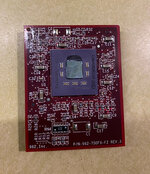Looking into purchasing a ZIF upgrade or 2 for overclocking testing, but finding caveats with various upgrades out there.
The Sonnet Encore G4 ZIFs apparently auto-configure their multiplier, and ignore any jumper settings. Is there a way to override this? I'd rather use the jumpers on my board.
I've seen PowerLogix with a dial. Does anyone have the manual for this? Can this dial be over-ridden, or is there a setting on it that will allow the module to respect jumper settings?
The Sonnet Encore G4 ZIFs apparently auto-configure their multiplier, and ignore any jumper settings. Is there a way to override this? I'd rather use the jumpers on my board.
I've seen PowerLogix with a dial. Does anyone have the manual for this? Can this dial be over-ridden, or is there a setting on it that will allow the module to respect jumper settings?


